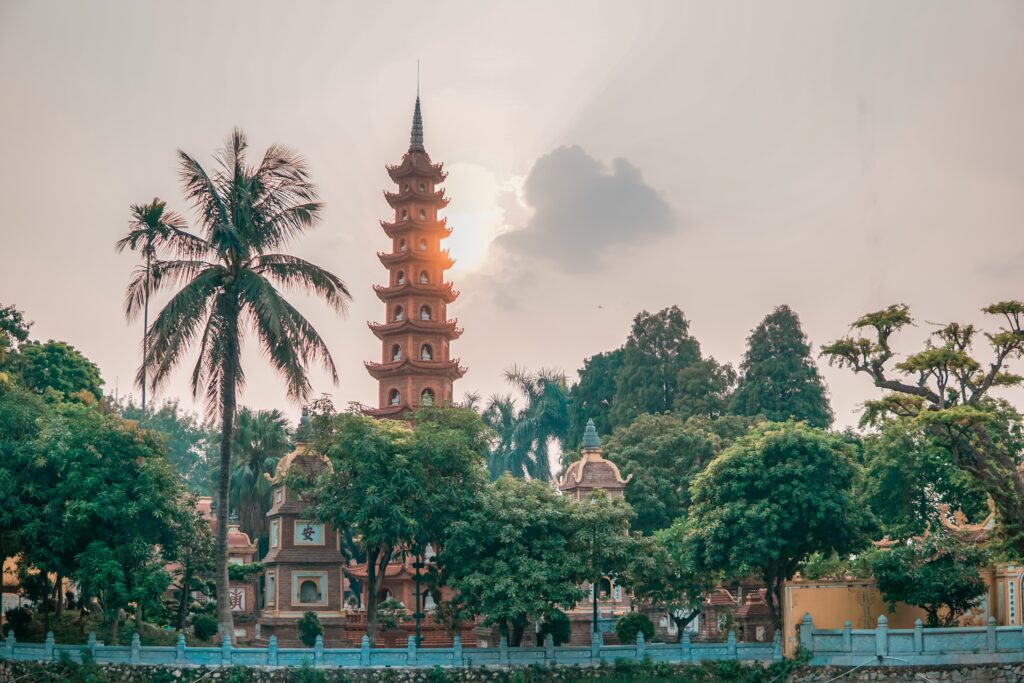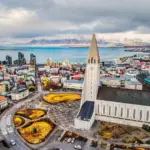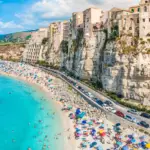
Introduction
Hanoi, located in northern Vietnam, is a metropolis rich in history and culture. As the country's capital, it plays a central role in Vietnam's political and economic landscape. With a vibrant population and an intriguing fusion of Eastern and Western influences, this captivating city attracts visitors from around the world.
In this article, we'll explore in detail the rich history and cultural significance that make Hanoi a must-see destination. An overview of Hanoi as the capital of Vietnam.
Having been the official capital since 1976, Hanoi is the political and administrative epicenter of Vietnam. Situated on the western banks of the Red River, it offers a strategic geographical location for government activities.
With its majestic government buildings and bustling streets, Hanoi reflects the power and influence associated with its status as a capital city. The Importance Historical and Cultural of the City.
Hanoi has deep roots in Vietnamese history, dating back to the 7th century. For centuries, it served as an important trading hub between the Chinese and Vietnamese civilizations, shaping its unique cultural identity.
Furthermore, during the Vietnam War, Hanoi played a vital role in the struggle for independence and the formation of Vietnamese national identity. The city is known for its architecture, influenced by the French occupation in the 19th century.
Impressive colonial buildings, such as the Hanoi Opera House and the Presidential Palace, are visible testaments to this era. This unique blend of Eastern and Western influences creates a captivating atmosphere that invites visitors to explore history fascinating city.

Ancient Origins and Chinese Influences
Hanoi has a rich history dating back over a thousand years. Founded in the 9th century by the Chinese emperor, initially called "Thăng Long" or "Rising Dragon," the city was an important economic and political center in the region, strongly influenced by Chinese culture.
This influence is still evident in the city's architecture, traditions, and cuisine. Hanoi's Old Quarter, known as the "Hanoi Old Quarter," is a maze of narrow streets and historic alleys originally divided by various Chinese merchant guilds.
Each street specialized in specific products, such as silk, jewelry, or spices. Furthermore, Chinese culture left its mark on the city's religion, with several Buddhist temples and pagodas incorporating traditional Chinese architectural elements. These sacred sites are popular with locals and tourists interested in exploring Hanoi's spiritual richness.
French Colonial Period and Its Architectural Influence
The French colonial period left a significant mark on Hanoi's architecture, shaping the city we know today. During the 19th century, Vietnam was colonized by the French, and Hanoi became the capital of the French protectorate of Indochina.
The French brought their distinctive architectural style, combining neoclassical and colonial elements. Many government buildings, private residences, and churches were built in this style, giving the city a unique atmosphere.
Notable examples of this architecture can be seen in the Hanoi Opera House, the Old Governor's Palace, and numerous colonial mansions around the city. The French influence also extends to Hanoi's café culture, with French-style cafes popular with locals and visitors alike.

Role During the Vietnam War
During the Vietnam War, Hanoi played a pivotal role as the political center of North Vietnam, led by the Communist Party. During this turbulent period in Vietnamese history, the city suffered intense bombardment by American forces.
One of the most notable events was the attack on the Long Biên Bridge in 1972. This historic bridge over the Red River was frequently attacked, but the Vietnamese rebuilt it several times as a symbol of resistance.
The Long Biên Bridge remains a testament to the horrors of war and is now a popular tourist attraction in Hanoi. Additionally, the Hanoi War Bunker, known as "Hỏa Lò Prison" or "Hoa Lo Prison," is another historical site that represents Hanoi's role during the Vietnam War.
Originally built by the French to hold Vietnamese political prisoners, it became famous as a detention site for captured American pilots. Today, the museum that houses part of this former prison complex chronicles the history of Vietnam during this turbulent period.
Geography and Climate of Hanoi
Hanoi, the capital of Vietnam, is located in the north of the country, on the banks of the Red River. Its strategic geographic location has played a crucial role in the region's history and development, particularly due to its proximity to the Chinese border, which has influenced its culture over the centuries.
The Red River and Its Impact on the City
The Red River is a key geographic feature that runs through Hanoi. Besides being an important water resource, the river has driven the region's economic development, providing opportunities for fishing, navigation, and irrigated agriculture. However, over the years, the river has also posed challenges, especially during floods that affect areas near its banks, impacting urban infrastructure and causing disruption to residents. Measures have been taken to improve drainage systems and mitigate the impacts of flooding on the city.
Humid Subtropical Climate with Four Distinct Seasons
Hanoi has a humid subtropical climate with four distinct seasons: spring, summer, autumn, and winter. Each season offers experiences different climates for the city's residents and visitors.
Spring is known for its mild temperatures and cherry blossoms, bringing a sense of renewal. Summer is hot and humid, with frequent rains that help alleviate the intense heat. Autumn offers picturesque scenery with cooler weather, while winter can be cold, especially in the nearby mountainous areas.
These year-round climate variations contribute to the diversity of life in Hanoi and influence the daily activities of its residents. It's important to consider these aspects when planning a visit to the city to fully enjoy its vibrant culture and explore the charms of each station.

Tourist Attractions in Hanoi
The Temple of Literature: Exploring Cultural and Educational Wealth
The Temple of Literature is a historical and cultural treasure dating back to the 11th century, during Vietnam's imperial era. Originally built as the country's first university, it offered education to the sons of nobility. Today, it serves as a testament to Vietnamese scholarship and is dedicated to Confucius.
Upon entering the Temple of Literature, visitors are greeted by stone-paved courtyards and manicured gardens. Statues of renowned Vietnamese scholars adorn the grounds, creating a reverent atmosphere.
The examination rooms, where students were assessed on their Confucian knowledge, are still preserved, along with altars and ancient scriptures. It's a fascinating experience to delve into Vietnam's intellectual history while strolling around. by the shaded corridors of the Temple of Literature.

Ho Chi Minh Mausoleum: Paying Homage to the Great Vietnamese Leader
Located in Ba Dinh Square, the Ho Chi Minh Mausoleum is a sacred site for the Vietnamese people. Built in the style of Soviet mausoleums, this imposing building houses the embalmed body of revolutionary leader Ho Chi Minh.
When visiting the mausoleum, visitors must follow strict dress codes and show absolute respect. The mausoleum's interior is austere, with a solemn atmosphere.
Ho Chi Minh's body rests in a glass sarcophagus, illuminated by soft light that creates a revered aura around the Vietnamese leader. Although lines can be long and visiting time is limited, this introspective moment is worth experiencing to understand Ho Chi Minh's influence and lasting legacy in Vietnam.
Hoan Kiem Lake: A Tranquil Oasis in the Heart of the City
In contrast to the fast-paced city life in Hanoi, Hoan Kiem Lake offers a serene retreat in the city center. With its landscaped gardens and picturesque bridges, this lake enchants visitors with its soothing natural beauty. Legend has it that King Le Loi's magical sword was returned to the gods in a legendary turtle found in this lake.
You local residents People flock to Hoan Kiem Lake for morning walks or simply relaxing on benches by the water while watching turtles swim peacefully by. Ngoc Son Temple, located on a small island within the lake, is a focal point for tourists looking to explore Vietnamese culture and learn more about history of the region.
These distinctive Hanoi landmarks offer a rich glimpse into Vietnam's cultural and historical heritage. From the Temple of Literature to the Ho Chi Minh Mausoleum and the serenity of Hoan Kiem Lake, each site is a window into the past, present, and future of this fascinating city.
Vietnamese Cuisine: An Explosion of Flavors in Hanoi
Hanoi's cuisine is a true celebration of the senses, encompassing the perfect combination of flavors, textures, and aromas. Vietnamese cuisine is known worldwide for its authenticity and the freshness of its ingredients. In Hanoi, visitors have the opportunity to sample a wide variety of traditional dishes that represent the country's rich culinary culture.
Authentic Vietnamese Cuisine
Vietnamese cuisine is known for its abundant use of fresh herbs, crunchy vegetables, and aromatic seasonings. Dishes like the famous Pho, a rice noodle soup with beef or chicken, are considered a symbol of Vietnamese cuisine.
Another iconic dish is Bun Cha, which consists of grilled meat dumplings served with noodles and fish sauce. The dishes are carefully prepared to balance the five fundamental flavors: sweet, salty, sour, bitter, and spicy.

Hanoi: A Gastronomic Paradise
In Hanoi, there's no shortage of options for food lovers to explore. From small street stalls to sophisticated restaurants, the city offers a wide range of places to sample authentic Vietnamese cuisine.
Local markets, like Dong Xuan Market, are a true sensorial experience, with stalls brimming with fresh ingredients and ready-to-eat dishes. Hanoi is also known for its craft beers and traditional coffees, which perfectly complement meals.
A Tasty Conclusion
Dining in Hanoi is more than just a culinary experience; it's a way to immerse yourself in the culture and history of Vietnam. Through the authentic and vibrant flavors of Vietnamese cuisine, visitors can explore the city's rich cultural heritage. So, be sure to sample the diverse array of delicious dishes Hanoi has to offer during your visit to the Vietnamese capital.
Lucas Wanderlust has a tireless spirit of adventure, always seeking new travel experiences. Fascinated by the world and the possibility of exploring unknown destinations, he fell in love with the sense of freedom and self-discovery that traveling alone provides. With a backpack on his back and a heart open to the unknown, Lucas embarks on exciting journeys, where each destination becomes a unique chapter in his life story. He gives himself body and soul to the magic of solo travel, inspiring others to follow in his footsteps and discover themselves through adventure.







